- 翰林提供学术活动、国际课程、科研项目一站式留学背景提升服务!
- 400 888 0080
AQA A Level Physics复习笔记7.10.2 The Operation of an Oscilloscope
Oscilloscope as a DC & AC Voltmeter
- A Cathode-Ray Oscilloscope (CRO) is a laboratory instrument used to display, measure and analyse waveforms of electrical circuits
- It can therefore be used as an a.c and d.c voltmeter
- An a.c voltage on an oscilloscope is represented as a transverse wave
- Therefore you can determine its frequency, time period and peak voltage
- A d.c voltage on an oscilloscope is represented as a horizontal line at the relevant voltage
- The x-axis is the time and the y-axis is the voltage (or y-gain)

Diagram of Cathode-Ray Oscilloscope display showing wavelength and time-base setting
- The period of the wave can be determined from the time-base
- This is how many seconds each division represents measured commonly in s div-1 or s cm-1
- The frequency is then determined through:

- Where:
- T = time period (s)
- Dividing the total time by the number of wavelengths will give a value for T
- Use as many wavelengths shown on the screen as possible to reduce uncertainties
C.R.O Controls for An A.C Waveform
- Time-base
- When the time-base is switched off, only a vertical line on the voltage-gain axis is seen with its relevant amplitude
- When the time-base is switched on, a wave will appear across the whole screen and the time period can be measured
- This control has units of time cm-1 or time div-1 and has a range of 100 ms – 1 μs per cm, or division
- Voltage-gain (sensitivity)
- This controls the vertical deflection, or amplitude, of the wave
- The peak voltage (V0) is the maximum vertical displacement measured from the time axis
- The peak-to-peak voltage is the vertical displacement between the minimum and maximum values of voltage
- When the voltage-gain is switched off, only a horizontal line on the time axis will be seen
- This control has units of volts cm-1 or volts div-1
- For a d.c waveform, only a horizontal line is displayed at the relevant voltage
- The time-base settings are irrelevant since there is no time period
- The voltage-gain setting is relevant since this is used to read the value of the d.c voltage
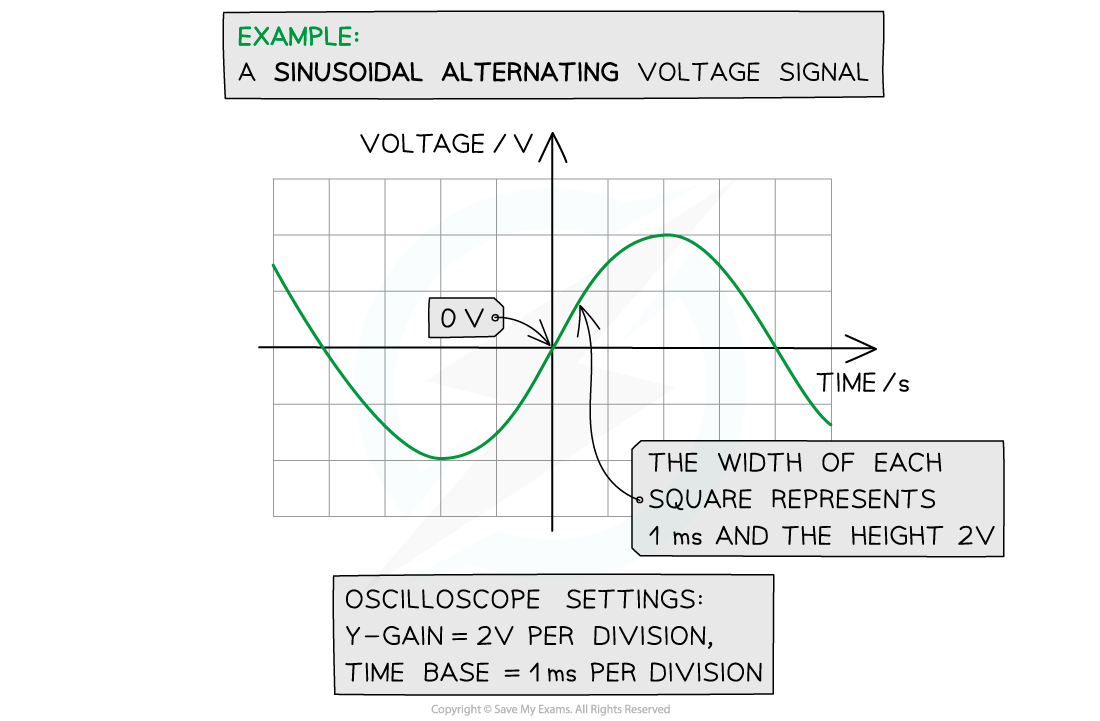
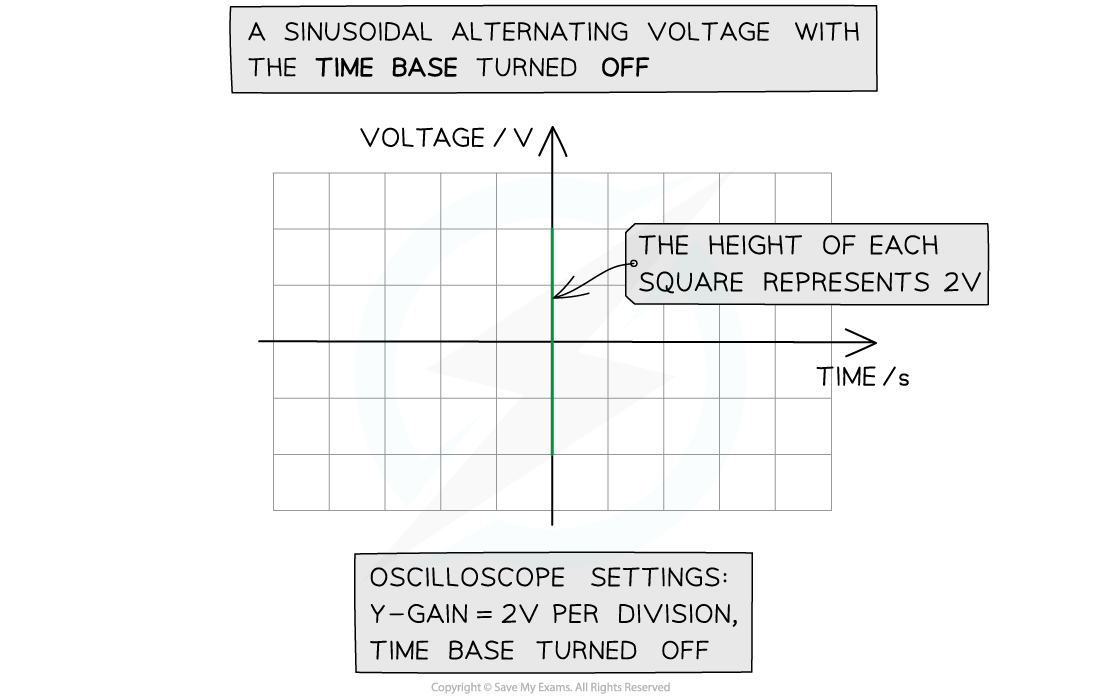
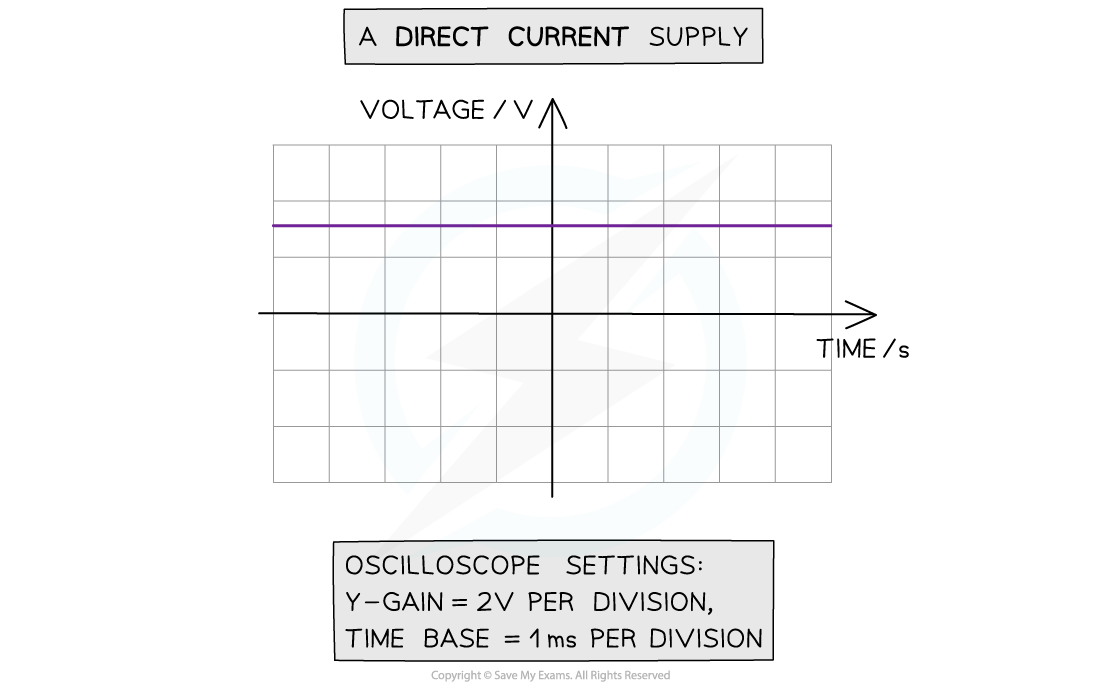
Examples of an alternating and direct voltage on a CRO with and without the time base
Worked Example
A cathode-ray oscilloscope (c.r.o.) is used to display the trace from a sound wave. The time-base is set at 7 µs mm-1.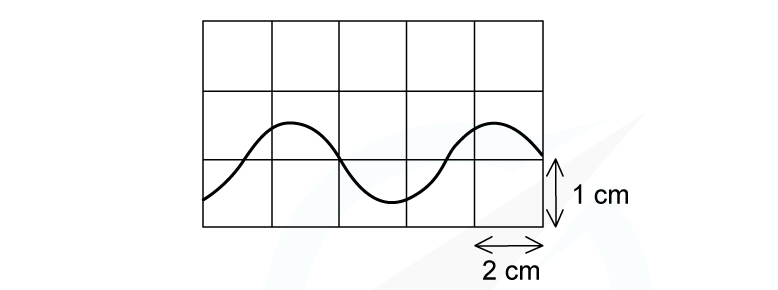 What is the frequency of the sound wave?A 2.4 Hz B 24 Hz C 2.4 kHz D 24 kHz
What is the frequency of the sound wave?A 2.4 Hz B 24 Hz C 2.4 kHz D 24 kHz
 What is the frequency of the sound wave?A 2.4 Hz B 24 Hz C 2.4 kHz D 24 kHz
What is the frequency of the sound wave?A 2.4 Hz B 24 Hz C 2.4 kHz D 24 kHz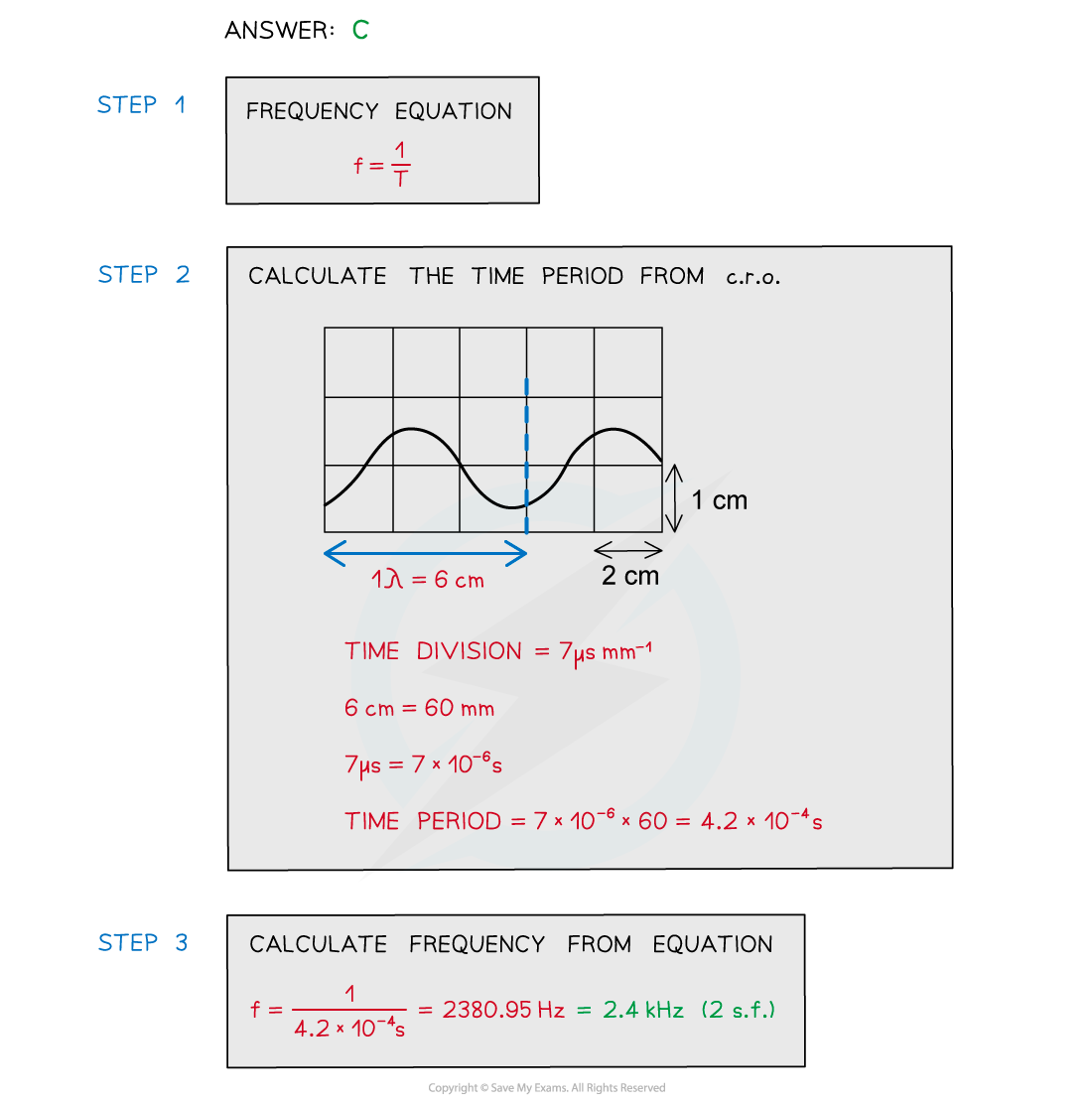
Exam Tip
The time-base setting varies with units for seconds (commonly ms) and the unit length (commonly mm). Unit conversions are very important when calculating the time period and frequency.
转载自savemyexams


最新发布
© 2025. All Rights Reserved. 沪ICP备2023009024号-1








